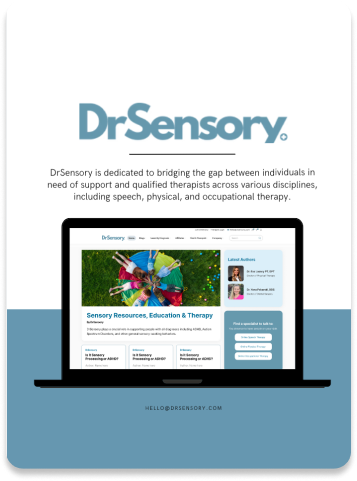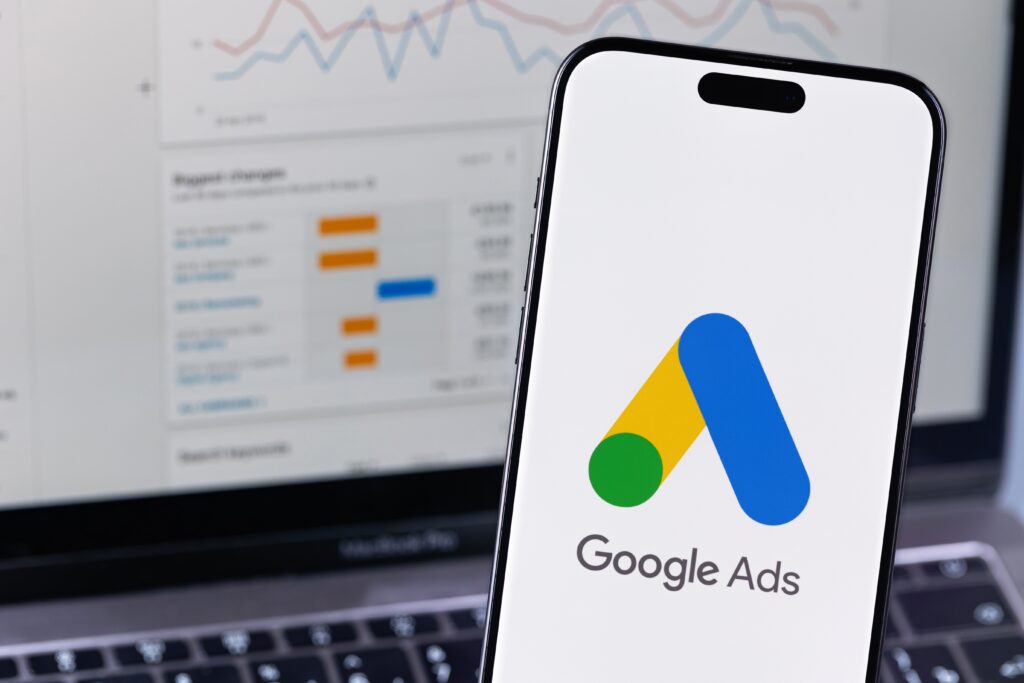
Blog
Content Marketing Ideas for Physical Therapists
Expert web designers ensure the site and software is easy to use.Content Marketing Ideas for Physical Therapists
Physical therapists who master content marketing attract more patients, build stronger referral relationships, and establish themselves as trusted healthcare experts in their communities. Yet many PT practices struggle with creating consistent, engaging content that resonates with their audience and drives real business results.
This comprehensive guide will transform your approach to physical therapy content marketing. You’ll discover proven strategies for blogging that improve your search rankings, learn how to leverage YouTube to showcase your expertise, understand how to create educational content that converts, and master newsletter integration that keeps patients engaged long-term.
Whether you’re a solo practitioner or managing content for multiple locations, these actionable PT blog ideas will help you build a content marketing system that attracts new patients while strengthening relationships with existing ones.
Physical Therapy Marketing & SEO: A Guide to Managing Customer Data for Growth

Why Content Marketing Works for Physical Therapy Practices
Content marketing generates three times more leads than traditional advertising while costing 62% less, making it an essential strategy for growing PT practices. Unlike paid advertising that stops working when you stop spending, quality content continues attracting patients months or years after publication.
Physical therapy patients actively seek educational content throughout their treatment journey. They research their conditions before appointments, look for exercises between sessions, and seek maintenance advice after discharge. By providing valuable content at each stage, you position your practice as the trusted resource they turn to for guidance.
Search engines reward healthcare practices that consistently publish helpful, authoritative content. Google’s E-A-T guidelines (Expertise, Authoritativeness, Trustworthiness) particularly favor medical content from qualified practitioners. When you share your clinical expertise through content marketing, you improve your search rankings while demonstrating credibility to potential patients.
Local SEO for Physical Therapists: How to Dominate in Your Area
Best Keywords for Physical Therapy SEO (With Examples)
How to Build a Physical Therapy Website That Ranks and Converts
Understanding Your Content Marketing Audience
Successful physical therapy content marketing starts with understanding your audience’s needs, concerns, and information-seeking behaviors. Your potential patients fall into several distinct categories, each requiring different content approaches.
Pre-injury patients seek prevention and wellness content. They’re interested in exercise tips, ergonomic advice, and injury prevention strategies. This audience responds well to proactive, educational content that helps them stay healthy and active.
Newly injured patients need condition-specific information and treatment guidance. They’re searching for symptom explanations, treatment options, and provider selection criteria. Content for this audience should be informative, reassuring, and action-oriented.
Current patients want educational content that supports their treatment progress. They seek exercise demonstrations, recovery timelines, and maintenance strategies. This audience values practical, detailed content that complements their clinical care.
Discharged patients benefit from ongoing wellness content and maintenance programs. They need motivation to continue healthy habits and information about when to return for additional care. Content for this group focuses on long-term health maintenance and injury prevention.

Developing a Strategic Blogging Approach
A strategic blog transforms your website into a patient magnet that works around the clock. Your blogging strategy should target specific keywords, address patient concerns, and support your overall marketing goals.
Topic Research and Planning
Base your blog topics on real patient questions and search data. Use tools like Google Keyword Planner, Answer the Public, and patient intake forms to identify what people want to know about physical therapy.
Create content pillars around your main service areas:
- Condition-specific content targeting keywords like “lower back pain treatment” or “knee injury recovery”
- Treatment explanations covering techniques like “dry needling benefits” or “manual therapy techniques”
- Exercise and wellness tips addressing “home exercises for back pain” or “workplace ergonomics”
- Prevention strategies focusing on “sports injury prevention” or “fall prevention for seniors”
Develop an editorial calendar that balances different content types while maintaining consistent publishing frequency. Plan seasonal content around common injury patterns, sports seasons, and health awareness months.
SEO-Optimized Blog Structure
Each blog post should target one primary keyword while naturally incorporating related terms. Use your target keyword in the title, first paragraph, and several subheadings throughout the content.
Structure your posts with clear headings that make content scannable:
- H1: Main title with primary keyword
- H2: Major section headings
- H3: Subsection headings within major topics
Include practical elements like checklists, step-by-step instructions, and actionable tips that provide immediate value to readers. These elements encourage social sharing and longer time on page, both positive ranking factors.
Building Authority Through Clinical Expertise
Position yourself as the go-to expert by sharing insights that only licensed physical therapists can provide. Explain the “why” behind treatment approaches, discuss case studies (with appropriate privacy protections), and offer professional perspectives on health trends.
Address common misconceptions about physical therapy and injury treatment. Use your clinical experience to provide nuanced explanations that general health websites can’t match. This expertise differentiation helps you rank higher for competitive health content SEO terms.
Social Media Marketing for Physical Therapists: A Strategic Guide

YouTube Strategy for Physical Therapists
YouTube represents a massive opportunity for physical therapists because visual demonstrations are particularly effective for explaining exercises, treatments, and injury prevention techniques. Video content also ranks well in search results and can significantly expand your reach.
Exercise Demonstration Videos
Create clear, professional exercise demonstration videos that patients can reference between appointments. Focus on proper form, common mistakes, and modifications for different ability levels.
Structure exercise videos consistently:
- Brief explanation of the exercise purpose
- Step-by-step demonstration with multiple angles
- Common mistakes to avoid
- Modifications for different conditions or abilities
- Safety considerations and when to stop
Tag videos with relevant keywords and create playlists organized by condition or body part. This organization helps viewers find related content while improving your channel’s SEO performance.
Educational Content Series
Develop ongoing series that position you as an educational resource:
- “PT Explains” series covering common conditions and treatments
- “Injury Prevention Tips” focusing on different sports or activities
- “Ask the Physical Therapist” addressing frequently asked questions
- “Recovery Stories” featuring patient success stories (with consent)
Consistent series help build subscriber loyalty while making content planning more systematic and manageable.
Behind-the-Scenes Content
Share behind-the-scenes glimpses of your practice to build personal connections with viewers. Show your treatment philosophy in action, introduce team members, and explain your approach to patient care.
This personal content helps differentiate your practice from competitors while building trust with potential patients who want to understand your personality and treatment style before scheduling appointments.
YouTube SEO Optimization
Optimize your YouTube content for search by including target keywords in titles, descriptions, and tags. Create compelling thumbnails that encourage clicks while accurately representing your content.
Use YouTube’s community features like polls, comments responses, and live streams to increase engagement and build relationships with your audience. Higher engagement rates improve your videos’ visibility in YouTube’s algorithm.
Educational Content That Converts
Educational content serves dual purposes: helping patients make informed decisions while demonstrating your expertise and care approach. The key is creating content that educates without overwhelming while guiding readers toward appropriate next steps.
Condition-Specific Resource Pages
Develop comprehensive resource pages for conditions you commonly treat. These pages should be more detailed than typical blog posts, serving as definitive guides that patients bookmark and return to repeatedly.
Include the following elements on condition pages:
- Detailed condition explanations using patient-friendly language
- Symptom descriptions that help people identify their problems
- Treatment options overview including what to expect from physical therapy
- Home management strategies for immediate symptom relief
- When to seek professional help guidelines
- Prevention strategies to avoid future problems
These comprehensive resources often rank well for competitive health keywords while providing significant value to visitors.
Exercise and Rehabilitation Guides
Create detailed exercise guides that complement your video content. Written instructions with accompanying images provide a complete resource that patients can easily access during home exercise programs.
Organize exercise content by:
- Body region (neck, back, shoulder, knee, etc.)
- Condition type (acute injury, chronic pain, post-surgical)
- Activity level (beginner, intermediate, advanced)
- Equipment needed (no equipment, resistance bands, weights)
Include clear progression guidelines that help patients advance their programs safely while understanding when to modify exercises based on symptoms.
Treatment Preparation and Recovery Content
Help patients prepare for treatment and understand the recovery process through detailed educational content. This type of content reduces anxiety while setting appropriate expectations.
Create guides covering:
- What to expect during your first appointment
- How to prepare for common treatments
- Understanding your home exercise program
- Tracking progress and recovery milestones
- When to contact your therapist between appointments
This preparation content improves patient satisfaction while reducing administrative burden on your staff.
How to Track ROI on Physical Therapy Marketing & SEO
How to Collect, Store, and Use Patient Data Ethically and Effectively

Newsletter Integration and Email Marketing
Email marketing remains one of the highest-ROI marketing channels for healthcare practices. Physical therapy newsletters allow you to maintain ongoing relationships with patients, share valuable health information, and generate return visits and referrals.
Newsletter Content Strategy
Develop a content mix that balances education, practice updates, and promotional messaging. A typical newsletter might include:
- Featured exercise or wellness tip (educational value)
- Seasonal injury prevention advice (timely relevance)
- Staff spotlight or practice news (personal connection)
- Patient success story (social proof)
- Upcoming events or new services (promotional content)
Maintain consistency in your newsletter format and schedule to build reader expectations and engagement habits.
Segmentation Strategies
Segment your email list based on patient status, interests, and treatment history to deliver more relevant content:
Current patients receive treatment support content, exercise reminders, and appointment-related information.
Discharged patients get maintenance tips, injury prevention advice, and return-to-care reminders.
Newsletter subscribers (non-patients) receive educational content designed to demonstrate expertise and encourage appointment scheduling.
Referral sources get professional updates, continuing education opportunities, and practice capability information.
Automated Email Sequences
Create automated email sequences that nurture leads and support patient care:
Welcome series for new newsletter subscribers introducing your practice, philosophy, and most popular content.
Treatment preparation series sent to newly scheduled patients explaining what to expect and how to prepare for their first appointment.
Recovery support series providing ongoing education and motivation for patients with specific conditions or treatment programs.
Reactivation campaigns targeting former patients who might benefit from follow-up care or maintenance programs.
Email Marketing for Physical Therapists: How to Stay Top of Mind
Top Physical Therapy Marketing Mistakes to Avoid (And What to Do Instead)
Content Repurposing for Maximum Impact
Maximize your content marketing ROI by repurposing single pieces of content across multiple channels and formats. This strategy reduces content creation workload while expanding your reach.
Blog to Social Media
Transform blog posts into multiple social media pieces:
- Key quotes as Instagram quote graphics
- Statistics or facts as LinkedIn professional posts
- Exercise tips as Facebook video demonstrations
- Infographic summaries highlighting main points
Create a content calendar that schedules social media posts promoting blog content over several weeks or months, extending the life and reach of each piece.
Video to Multiple Formats
Repurpose exercise demonstration videos into:
- Blog post tutorials with screenshots and written instructions
- Social media clips highlighting key points or common mistakes
- Email newsletter content featuring exercise of the week
- Patient handouts with QR codes linking to full videos
This approach ensures consistent messaging across all channels while accommodating different content consumption preferences.
Long-Form to Bite-Sized Content
Break comprehensive guides into smaller, digestible pieces:
- Multi-part blog series exploring different aspects of complex topics
- Social media tip series sharing individual points over time
- Email newsletter segments featuring one tip per issue
- FAQ collections addressing common questions from comprehensive content
This segmentation helps busy audiences consume your expertise in manageable portions while creating multiple touchpoints for engagement.

Measuring Content Marketing Success
Track specific metrics that align with your practice goals and demonstrate the business impact of your content marketing efforts.
Website Analytics
Monitor key website metrics that indicate content effectiveness:
- Organic search traffic growth over time
- Top-performing content by page views and engagement
- Conversion rates from content to appointment requests
- Average time on page indicating content quality and engagement
- Bounce rates showing how well content meets visitor expectations
Use Google Analytics to set up goal tracking for newsletter signups, contact form submissions, and appointment requests originating from your content.
Social Media Engagement
Track social media metrics that demonstrate audience building and engagement:
- Follower growth rates across different platforms
- Engagement rates (likes, comments, shares) on different content types
- Video completion rates for exercise demonstrations and educational content
- Click-through rates from social media to your website
- User-generated content like patient exercise videos or testimonials
Email Marketing Performance
Monitor email metrics that show audience engagement and list health:
- Open rates indicating subject line effectiveness and audience interest
- Click-through rates showing content relevance and call-to-action effectiveness
- List growth rates demonstrating your ability to attract new subscribers
- Unsubscribe rates indicating content quality and frequency appropriateness
- Revenue attribution from email campaigns to appointment bookings
What Is Customer Data Management in Healthcare Marketing?
Choosing the Right Practice Management and CRM Tools for Your PT Clinic
Best CRM Tools and Customer Database Management Software for Small Practices
Common Content Marketing Mistakes to Avoid
Many physical therapy practices make predictable content marketing errors that limit their success and waste valuable time and resources.
Inconsistent publishing schedules confuse audiences and hurt search engine optimization. Commit to realistic publishing frequencies that you can maintain long-term.
Overly technical language alienates potential patients who don’t understand medical terminology. Write for your audience’s comprehension level, not your professional peers.
Lack of clear calls-to-action wastes content marketing opportunities. Every piece of content should guide readers toward appropriate next steps.
Ignoring local SEO opportunities misses high-intent local searches. Include location-specific content and keywords in your content strategy.
Focusing only on promotion turns off audiences seeking valuable information. Balance educational content with promotional messaging.
Building Your Content Marketing System
Creating sustainable content marketing requires systematic approaches that make content creation manageable while ensuring consistent quality and messaging.
Start with a content audit of your existing materials. Identify gaps in your current content coverage and opportunities to repurpose existing resources into new formats.
Develop standard operating procedures for content creation, including research methods, writing templates, and approval processes. These systems ensure consistency while making it easier to delegate content tasks.
Create content templates for common post types like exercise demonstrations, condition explanations, and patient education pieces. Templates speed up content creation while maintaining quality standards.
Build a content calendar that plans topics, publishing dates, and promotional activities months in advance. This planning prevents last-minute content scrambles while ensuring comprehensive topic coverage.
Your Content Marketing Action Plan
Transform your approach to physical therapy content marketing with these concrete next steps:
- Audit your current content to identify gaps and repurposing opportunities
- Research your audience’s content needs through patient surveys and keyword analysis
- Choose your primary content channels based on your audience preferences and resource availability
- Create a realistic content calendar that you can maintain consistently
- Develop content templates and systems that streamline your creation process
- Set up tracking systems to measure your content marketing ROI
Remember that content marketing is a long-term strategy that builds momentum over time. Start with consistent execution of basic strategies before expanding into more complex approaches.
Your expertise as a physical therapist gives you unique authority in creating health content that serves your community while growing your practice. Use that expertise strategically through content marketing, and you’ll build sustainable patient acquisition systems that work around the clock.
Focus on providing genuine value through every piece of content you create. When you consistently help people solve problems and answer questions, they naturally turn to you when they need professional physical therapy services.
Why TheraPro360?
Run your practice with simplicity with our streamlined scheduling, seamless telehealth integration, centralized patient portals, intuitive calendar management, and automated invoicing.
Get Started TodayAuthors and Contributors

Eva Lassey PT, DPT
Co-Founder of TheraPro360
Dr. Eva Lassey PT, DPT has honed her expertise in developing patient-centered care plans that optimize recovery and enhance overall well-being. Her passion for innovative therapeutic solutions led her to establish DrSensory, a comprehensive resource for therapy-related diagnoses and services.

Irina Shvaya
Co-Founder of TheraPro360
Irina Shvaya is the Founder of eSEOspace, a Software Development Company. She combines her knowledge of Behavioral Neuroscience and Psychology to understand how consumers think and behave.
Contents

Build Your Therapy Practice Online With a Website That Actually Works
At TheraPro360, we’re more than just software — we’re your all-in-one partner for practice management and online growth. From custom websites to SEO and marketing, we help therapists modernize their online presence and attract more patients.
Whether you're starting fresh or your current site needs a serious upgrade, our streamlined, white-glove process takes the stress out of getting results — so you can focus on what matters most: your patients.
Ready to Grow Your Practice?
👉 Schedule Your Free Discovery Call Now
Let’s build your online presence — together.










